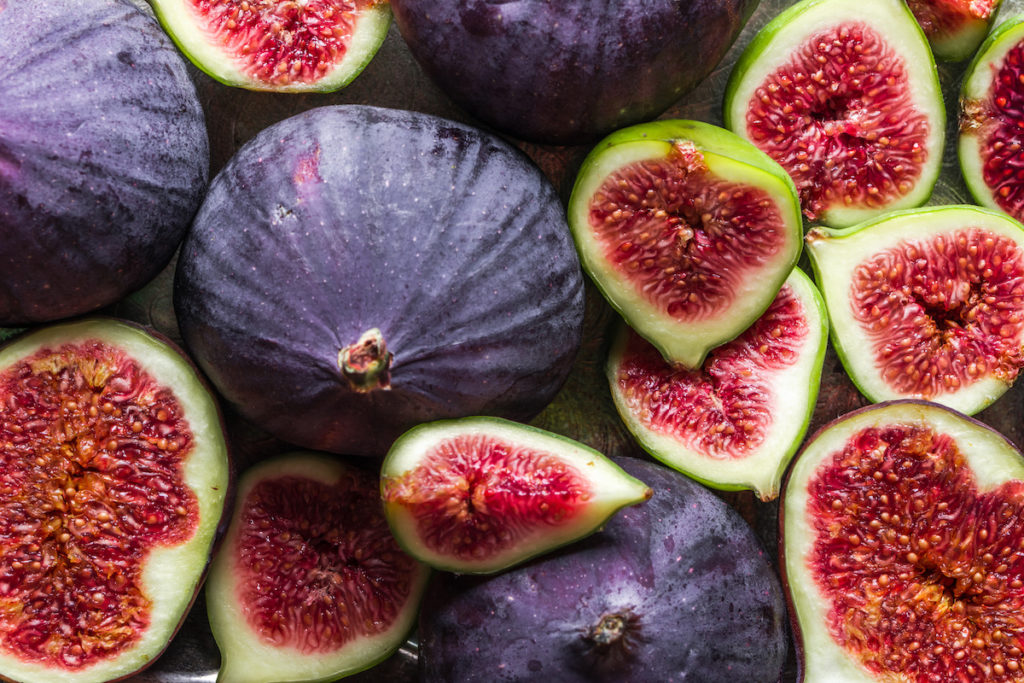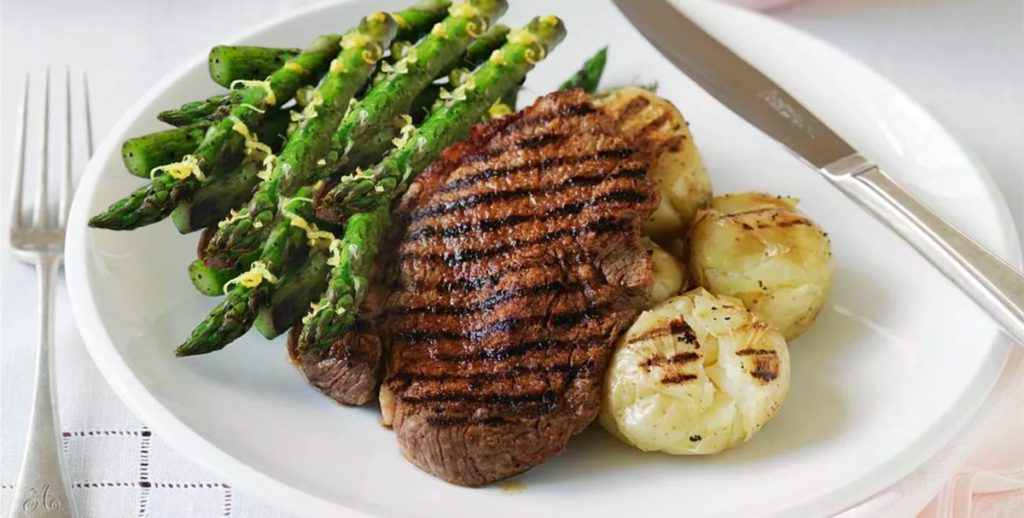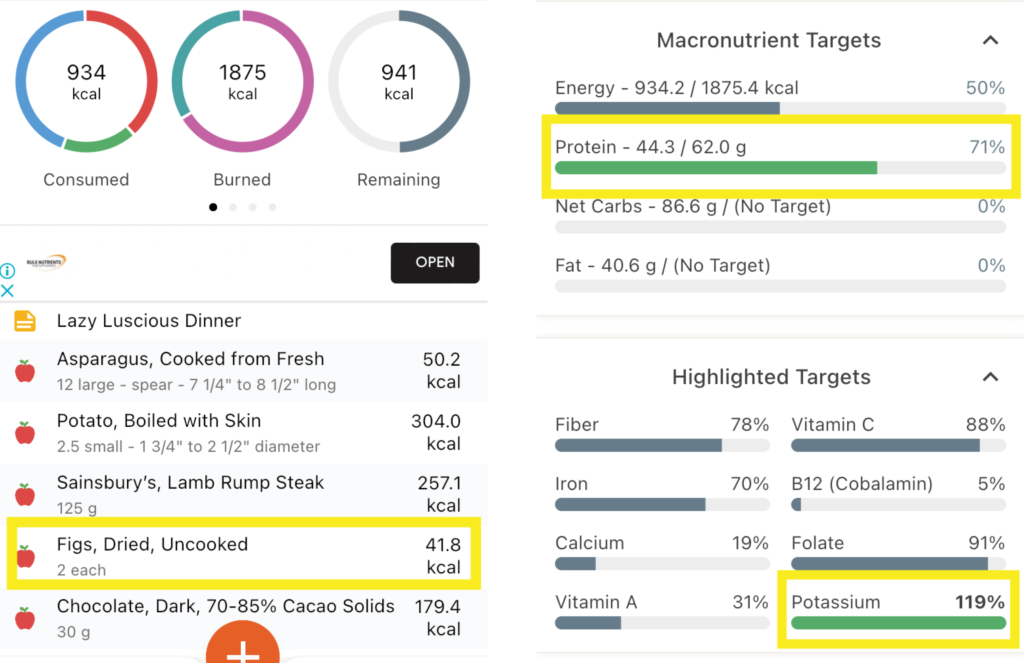My lord I can go on, I know.
And for weeks now I’ve really been banging 🥁🥁
The 1st drum was me making us all salivate & suffer through my month-long Mediterranean feast
The 2nd, my ongoing incurable fixation on the ‘Power of the Ps’ – Protein & Potassium, not just individually, in terms of meeting optimal requirements for each, but relationally, as in, the (im)balance between them & the clear goals that have come from research for best health outcomes.
Maybe now you can hear the individual drumbeats merging to form some sort of chorus rather than a cacophony?! I can🎶 And largely that’s because I decided to put the Ps & Ps principles (Total Protein:Potassium < 1; Animal Protein:Potassium <0.6 etc) into practice, entering my own meals into software to see how often I kicked each goal and how often I missed (& [ouch] kicked myself). Personally, I think thirty years in the game can lead to some laziness around looking in depth at our own dietary habits. As in, I know the ‘rules’ right, back to front, so I’ve told the ref to have the rest of the season off! My meals are both mantra and memory foam. There’s a lot of eat and repeat. Like my heavy lunchtime reliance on my ‘protein power pack’: 2 XL soft boiled eggs on 1 piece of avocado paleo toast and a bunch of asparagus. My (in)famous buckwheat breakfasts loaded with nuts, yoghurt & fruit. My bulk-cooked plant protein heavy, animal protein light, stews, sauces and soups. Even, what I considered my laziest but luscious organic farmers market meal, pan fried lamb rump steak, steamed fresh new season potatoes & a bunch of asparagus. So which of these would you have put your money on for the most Ps& Ps goals kicked? 🤓🤯
The Lazy Luscious Steak & Veg Meal Wins with…
Total Protein : Potassium of 0.56!
Animal Protein : Potassium of 0.41
Btw that’s because of the Potassium-punch of Potatoes [>2200mg!] and the finale of Figs & dark chocolate [329mg]!
Animal Protein : Vegetable Protein of 2 : 1 (ok so you can’t win everything!)
Now obviously I am just looking at each meal individually, but the Protein & Potassium goals are really daily ones, however, I, like most people, don’t lay out the totality of my ideal food intake for the day and then think, now how do I make this all edible?! I think in meals not metadata! So this little exercise was already incredibly rich in insights, checking my assumptions and snapping me out of some misguided mental calculations into the real world, placing a ref back on the pitch! I’m not ditching any of these favourites – just more mindful of what meal goes with others across the day, for better balance. Now all this analysis is time-consuming of course and while various software will do the macro and micro crunch, as far as I know, you still need to do all the Protein and Potassium calculations by hand, Ah yup. So, 1) I’m stopping now & 2) I’m thinking about creating a little spreadsheet that auto-calculates a lot of these targets once you’ve obtained that basic elemental data to input, for easier use in the future – would you use it?? [insert answer here 🙋♂️]
And then you can show me your kick arse protein/potassium combo!
Because clearly even us ‘experts’ apparently need data to double-check our assumptions!
Now where’s the other 🥁 in all this, that Mediterranean one, I hear you ask? It’s in the figs! My lamb dinner actually just missed reaching the targets for protein and potassium balance…until my fig finale! And remember, what the Greeks say, ‘A few figs a day keep the chronic-mild-metabolic-acidosis at bay!’ 😂 Just jokes…
The Protein & Potassium Riddle of Ageing – Muscles and Bones
To prevent or minimise our slow but steady march towards sarcopenia, the need for dietary protein adequacy to fuel muscle maintenance is a no-brainer – but how does ageing affect this? We get less bang for our buck. We have to eat more, to get the same ‘amount’ but do you know why this is? Add to this, that also as we age, we experience a greater acid burden from a lower acid dietary load. And given that a higher acid load (PRAL), has been shown to have a negative effect on muscle and bone markers in the past, clearly to ensure optimal health of our bones and muscles as we age, we have a riddle, or two, we need to solve. How do we use Protein and Potassium intakes to benchmark our patient’s diet quality and musculoskeletal risks and can we modify their consumption of either, to drive therapeutic gains in terms of both BMD and muscle?



